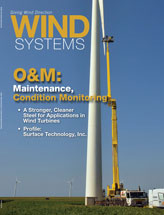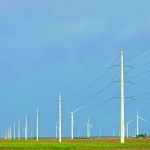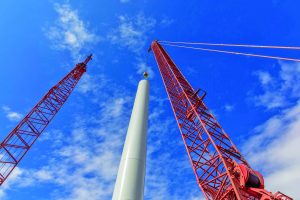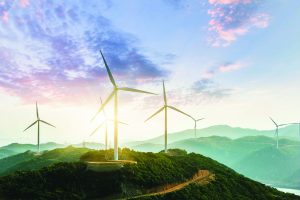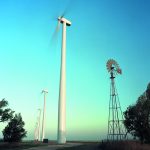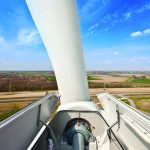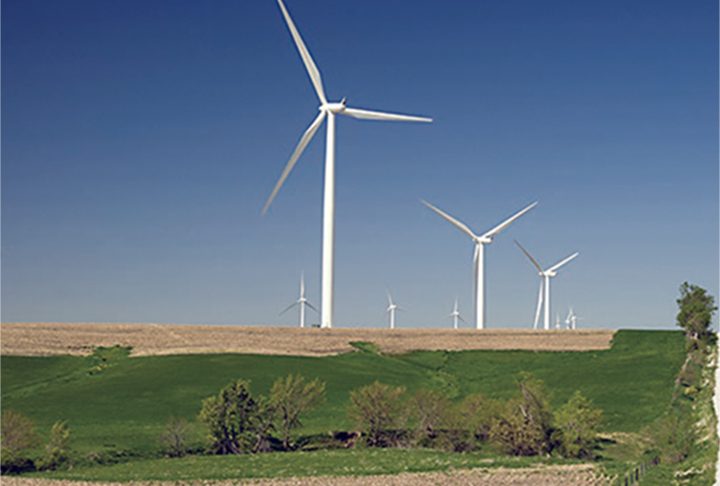Smaller computers and sensors, better battery technology, and vastly improved algorithms for managing flight and safety have transformed drones from a niche hobby into a global craze over the last three to five years. Drones that once required a professional pilot to operate effectively are now essential tools for businesses spanning every industry from delivery to industrial inspection. However, drone technology is still at the tip of the iceberg in terms of what’s possible. As such, many businesses have opted to wait to see what technologies and vendors emerge as leading providers of drone services and technology. Wind turbine operations and maintenance is one industry that is well-positioned to benefit in the near term from drone use in their operations.
 Wind Energy and Drones Are an Easy Fit
Wind Energy and Drones Are an Easy Fit
The primary purpose of any drone is to carry cameras and other sensors to places that are challenging (economically or physically) to access. In the wind sector, blade inspection operations benefit tremendously from drone use. Instead of up-tower or ground-based inspection methods, a drone-based blade inspection involves a drone carrying a high-definition camera along each of the four sides of each of the three blades on a given tower. A technician conducting a blade inspection with a drone will typically find it most efficient to examine the images after an inspection flight. However, video and data-streaming products also make it quite simple to view the pictures or video on a mobile device in real time.
While pictures and video are most prevalent in terms of output from a drone inspection, drones are not limited to carrying cameras alone. Other sensors such as thermal cameras, ultrasonic sensors, and laser scanners are also useful in wind turbine blade inspections and can readily be configured to be carried and controlled by a drone. In fact, the type and variety of sensors that may be carried by a drone are limited only by its payload and, if applicable, its power storage and distribution capabilities.
How To Stay Safe When It Comes to Drones
Safety is a primary concern for any operation in the wind energy sector. Drones are a new technology that come with their own set of hazards, as well as features and processes to mitigate these respective risks. It’s important for a drone operator to be familiar with these drone safety technologies and general aviation safety guidelines, in addition to all aspects of turbine inspection safety.
Anti-collision is a hot topic in the drone industry. As one might expect, anti-collision technologies prevent collisions, typically in the context of preventing collisions with things that the drone can see or observe using some sort of sensing technology. Sensors such as laser range finders or sonar are well-suited for identifying and avoiding wind turbines. Vision-based systems and radar, on the other hand, are better suited for detecting and avoiding other aircraft. There are a limited number of off-the-shelf drones that come equipped with these types of technologies; however, see-and-avoid sensing solutions will likely become standard with any off-the-shelf commercial drone purchase in the near future.
 A technology known as “geo-fencing” keeps a drone within global positioning systems (GPS) boundaries prescribed by the user or as mandated by air traffic control laws.
A technology known as “geo-fencing” keeps a drone within global positioning systems (GPS) boundaries prescribed by the user or as mandated by air traffic control laws.
Some implementations of this technology allow the user to define no-entry zones in the exact same way as one would define a no-exit zone. Technologies like this can be used, for example, to demarcate an area surrounding a wind turbine where the drone should not go inside. Geo-fencing is a complement and not a replacement for see-and-avoid.
For example, imagine that your eyes are closed and that someone has asked you to take a picture at the edge of a cliff, which you’re told is 10 yards away from you. This scenario is like trying to do an inspection with geo-fencing alone. In the example of taking a picture at the edge of a cliff, you would probably be comfortable taking six or seven steps forward, but after that, it’s probably not safe for you to proceed. See-and-avoid is the equivalent of opening your eyes. Just as opening your eyes gives you the ability to take those last few steps, so too does see-and-avoid allow the drone to get as close to a wind turbine blade as is safely possible.
The Buzz about Autonomy
Autonomy, for better or worse, has become a marketing buzzword in the drone technology sector. The word autonomy can mean anything from autonomous stability control to full-fledged automated surveys or inspections. As a prospective buyer, this can be confusing.

Most commercial drones navigate throughout the world with GPS. For many of these drones, onboard software allows the drone to follow coordinates, or waypoints, that are defined by the user using Google Maps or a similar application. This mode of autonomous navigation is convenient for surveying large areas or any kind of flight plan where the waypoints are spaced far apart. High-precision navigation tasks like wind turbine blade inspection have different requirements both in terms of user input and navigation techniques.
Navigation solely based on GPS falls short in the same way as geo-fencing. After all, they are based on the same underlying GPS technology. Advanced techniques that take input from multiple sensors beyond just GPS have come to the forefront as early adopters of drone technology in the wind energy sector begin to identify and adjust for the shortcomings of GPS. Combining multiple sensor inputs to achieve a unified understanding of the world and a robot’s place within it is commonly referred to as sensor fusion. One example of a sensor fusion-based approach to navigation might involve the robot using GPS to make a guess at where the robot is located in the world, and then use a camera to hone in on its precise location. Humans regularly employ this type of approach to navigation. Any time you’ve ever been lost in a new city and come to a familiar intersection, your whole understanding of where you are falls into place. Visual cues can help both humans and drones navigate in this manner.
Room for Growth
Drones are an affordable and efficient means for collecting wind turbine blade inspection data, but what their use implies for preventative maintenance is perhaps even more exciting. Conveniently, drones generally “know” where they are located when they take a picture or collect some other piece of data. This makes it trivial to query pictures from the exact same location on the same blade over the past several inspections to see, for example, how a crack is progressing through time. Also, because drone inspections can be completed faster than manual inspections, and some day without human supervision, the sheer quantity of inspection data that will be available will be a launchpad for new approaches to analytics.
















